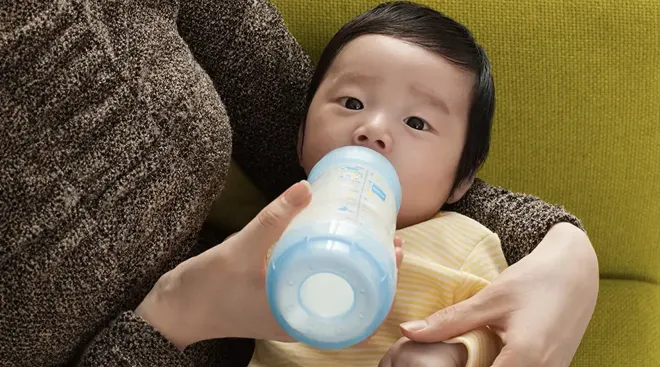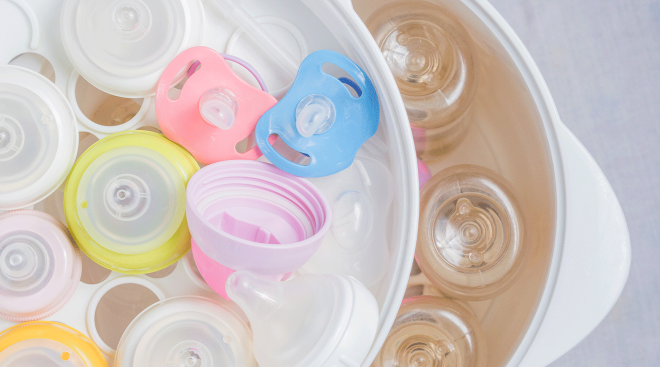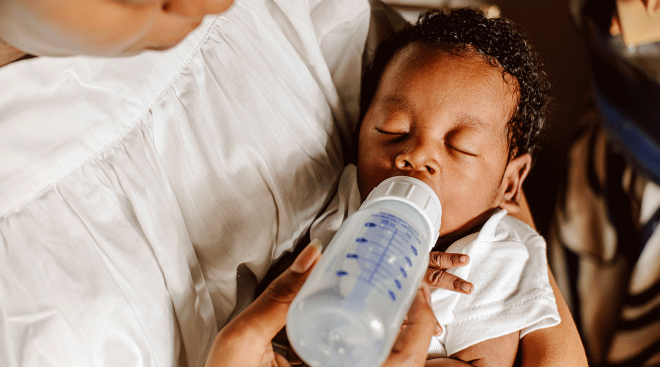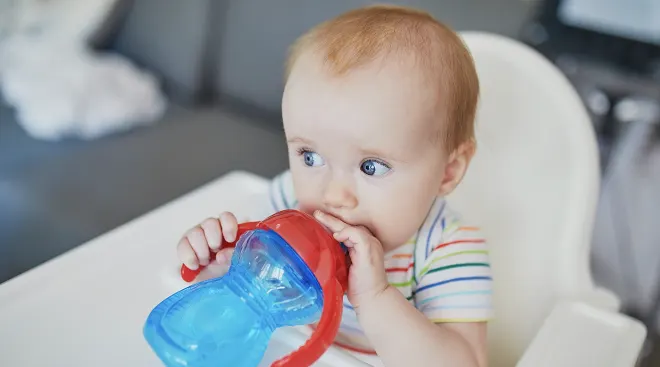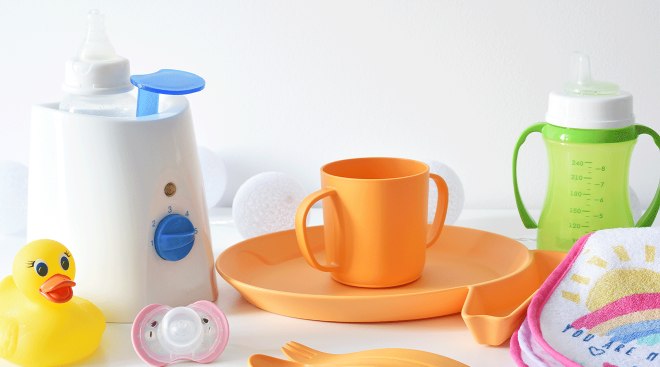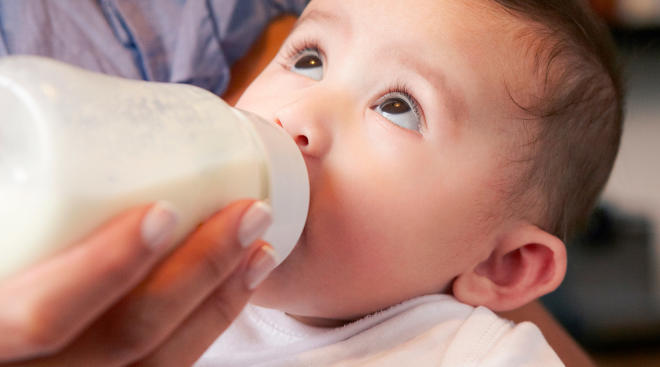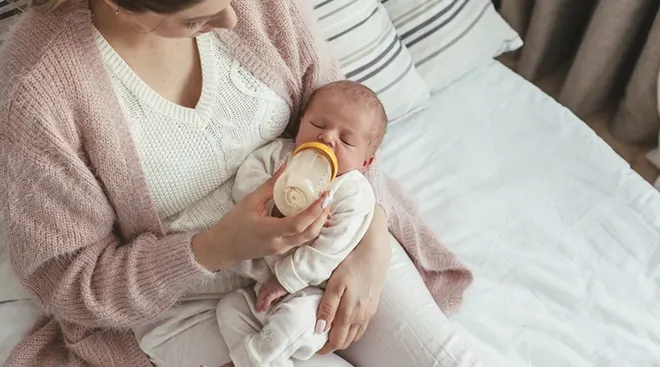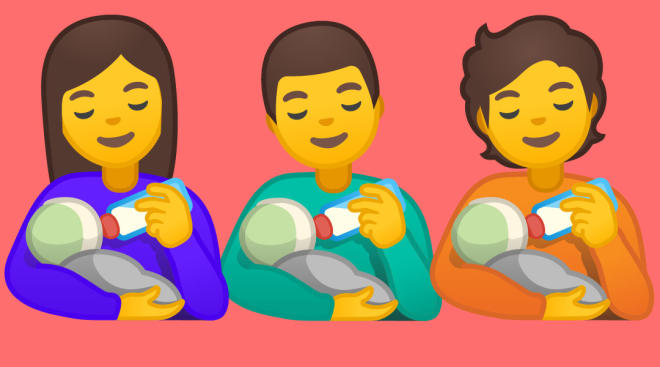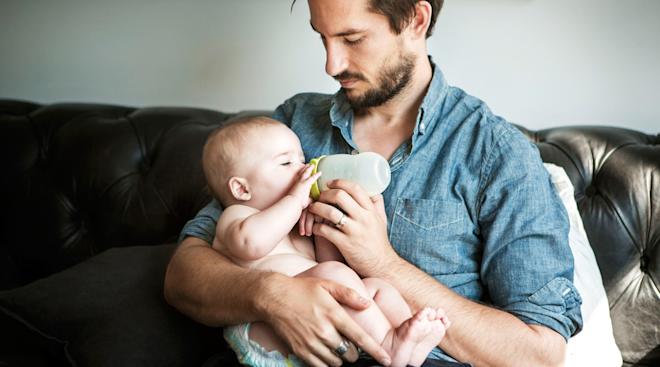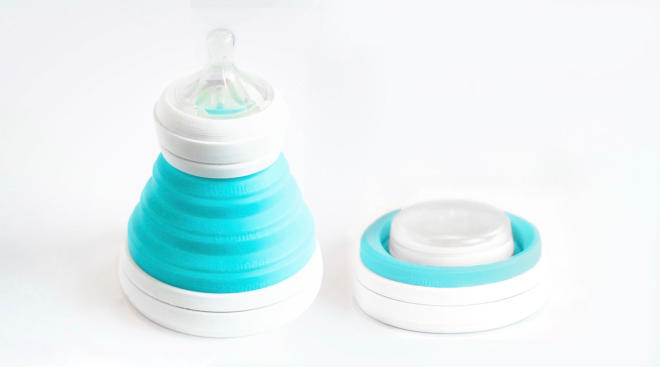When to Introduce a Sippy Cup (and How)
Whether baby is breast, bottle-fed or a combination of the two, sometime during their first year you’ll want to start introducing them to the wide world of cups. Also called training cups, sippy cups come in a range of styles but typically feature a spout-like lid, and are meant to help little ones ease off bottle use and prevent spills. They’re a popular and natural choice to ease the transition from bottles to straw or open cups. Much like training wheels, sippy cups aren’t strictly necessary, and you wouldn’t use them forever. But for many, they can serve as a helpful stepping stone.
With so many types of sippy cups on the market—and differing opinions on the use of sippy cups—it can be challenging to sift through it all to determine when to introduce a sippy cup, how to go about transitioning from bottle to sippy cup, whether to use a straw vs. sippy cup, and everything else that comes with it. Here, experts weigh in so you can make the switch with confidence and ease.
The main reason to introduce a sippy cup is to help wean baby off a bottle in a timely fashion. “Sippy cups aren’t a necessity, but they can help smooth the transition off bottles,” says Jacquelyn Crews, MD, a pediatrician and certified lactation consultant at Johns Hopkins All Children’s Hospital. The American Academy of Pediatrics recommends having babies off bottles by 18 months, although the sooner the better. That’s because prolonged bottle use can lead to cavities and iron-deficiency anemia and encourage your child to drink much more milk than they need to.
Advice on the exact age of when to introduce a sippy cup varies and depends in part on your child, but sometime between 6 and 12 months of age is typical. Crews says 9 months is a good time to start. Meanwhile, Kathy Fray, a senior midwife and author of several books including Oh Baby…: Birth, Babies, and Motherhood Uncensored, says to introduce a sippy cup with water in it at the same time as introducing solid food—so around 6 months of age.
One way to determine when to transition from bottle to sippy cup is to look for signs of readiness. Some signs baby might be ready include:
- They can sit without support
- They can hold the bottle and tip it to drink independently
- They’re eating solid foods (even just purees)
- They show interest by reaching for your cup
These days, there are seemingly more types of sippy cups on the market than flavors of baby food. Traditionally, sippy cups have a protruding spout—but today there are many kinds of sippy cups, including ones with soft, nipple-like spouts; ones with hard plastic spouts; ones with straws and even ones with auto-sealing rims. When transitioning from bottle to sippy cup, the American Dental Association (ADA) recommends avoiding cups with valves, which they say are really bottles in disguise. A valve may help prevent spills, but in order to drink out of them, kids have to suck (as they would from a baby bottle) rather than actually sip.
Melanie Potock, a Denver-based pediatric feeding specialist and co-author of Baby Self-Feeding: Solutions for Introducing Purees and Solids to Create Lifelong, Healthy Eating Habits, advocates for using straw cups over traditional sippy cups. “Although occasional sippy cup use is fine, speech-language pathologists and feeding specialists like myself strongly urge parents to transition from breast or bottle to straw drinking,” she says. “Sippy cups (depending on the type) can inhibit tongue movement and developing a mature swallow pattern necessary for eating more advanced foods.”
Developmentally, Crews says it doesn’t matter if the cup has handles or not; that’s more a matter of preference.
It could be a good idea to try a few different kinds of sippy cups to see what works best for your child. “That way, they don’t become too used to one style that they’ll only drink from,” says Kayla O’Neill, a developmental therapist and early interventionist for babies 0 to 3, and the creator of Parenting Expert to Mom. O’Neill also advises practicing with an open cup early and often; if you’re worried about spills, try it outside in warm weather or at home when you can do a quick outfit change.
Though introducing a sippy cup is mostly a combination of trial and error and practice, experts have a few suggestions for getting baby to drink from a sippy cup, including what to put in it, how much and when to offer it for optimal success:
● Pick a liquid. “The best way I’ve found to make this transition is by putting whatever baby drinks (expressed breast milk or formula) in the sippy cup and only putting water in their bottle,” Crews says. “This makes the sippy cup more desirable than the bottle.” However you choose to do it, stay consistent.
● If you’re nursing, keep it up. If you exclusively breastfeed your child, you can continue to do so—simply offer water in the cup, Crews advises.
● Don’t fill ‘er up. Start with a few ounces of liquid at a time in the cup, Crews suggests.
● Skip the juice. Fray advises against routinely offering juices in a sippy cup because of their high sugar content, though she says juice boxes can be a useful tool for teaching little ones to use a straw. The ADA says not to let children sip on milk or juice throughout the day since it can cause tooth decay, and instead recommends keeping those beverages to mealtime.
● Don’t run and drink. This may sound outlandish, but 14.3 percent of children under 3 who are admitted to the emergency room have sippy cup-related injuries. Most often, it’s because they’re still a bit unsteady on their feet and fall while drinking on the go. Just like food, keep the cup at the table.
● Offer in the mornings. Although parents should offer the sippy cup many times throughout the day, Crews says the morning is often ideal, since babies who sleep through the night will be thirsty and therefore more willing to learn.
When transitioning from bottle to sippy cup, some little ones will get the hang of a new cup right away, but more often than not there’s a learning curve. “If baby refuses the sippy cup, don’t give up and don’t get frustrated,” Crews advises. “Like all other things, babies need time and practice to adjust to this new skill. Take a few days off from offering the sippy cup, then reintroduce it. Praise baby when they succeed with the cup, even if baby didn’t get much liquid from the cup but at least held it the right way.”
O’Neill agrees not to force it. “All children are different and won’t be ready to try the sippy cup at the same time. You don’t want to create a negative experience around it, so putting pressure on your child isn’t the best option,” she says. “Your little one has been feeding from the breast or a bottle since they were born, and it may take a while for them to adjust.”
Please note: The Bump and the materials and information it contains are not intended to, and do not constitute, medical or other health advice or diagnosis and should not be used as such. You should always consult with a qualified physician or health professional about your specific circumstances.
Plus, more from The Bump:
Navigate forward to interact with the calendar and select a date. Press the question mark key to get the keyboard shortcuts for changing dates.

































